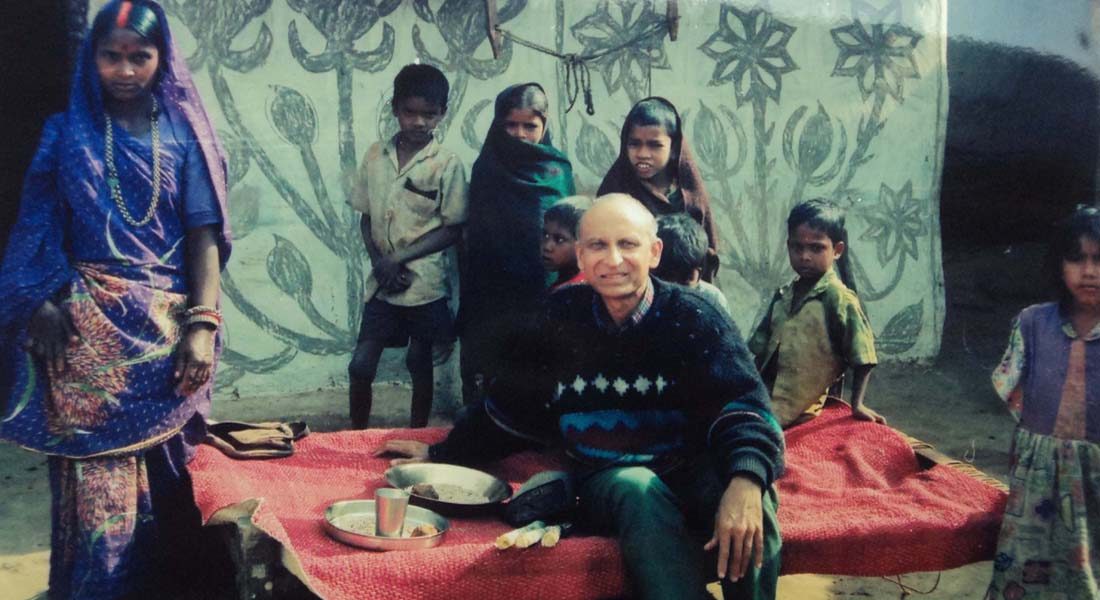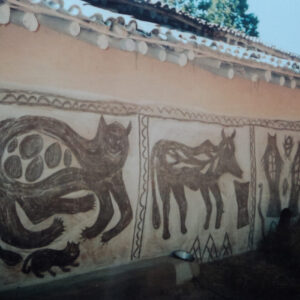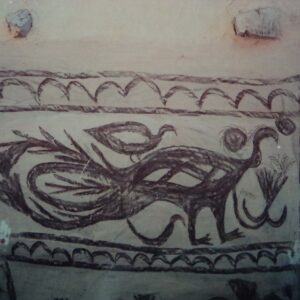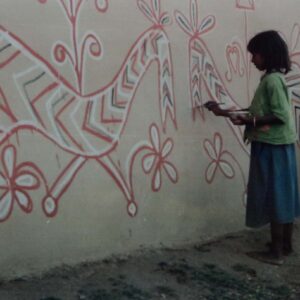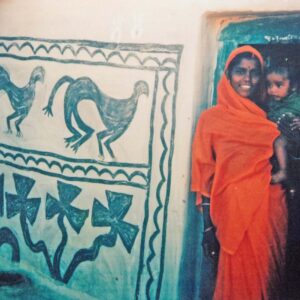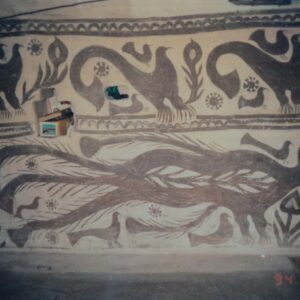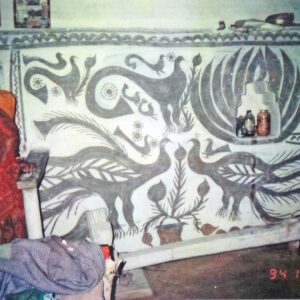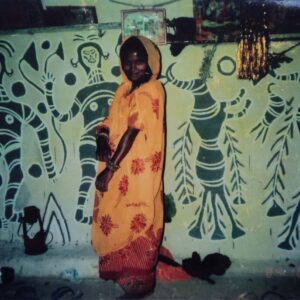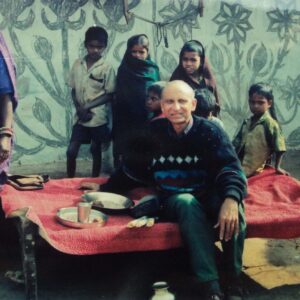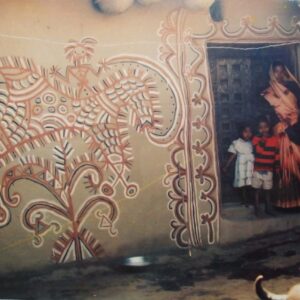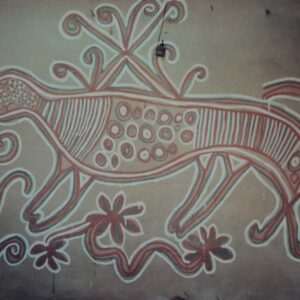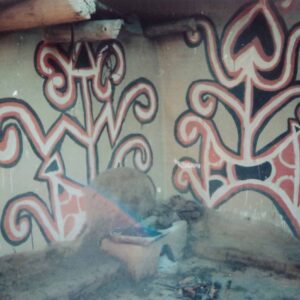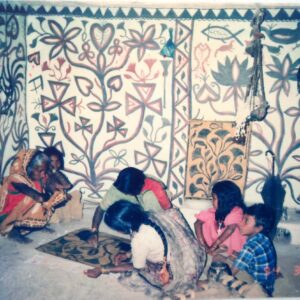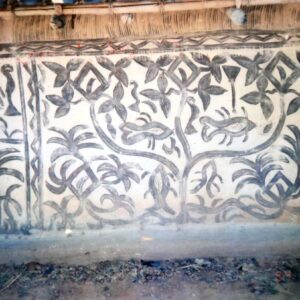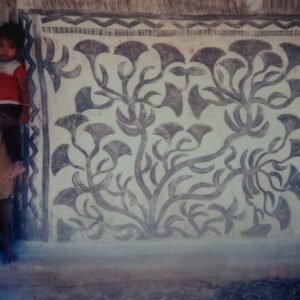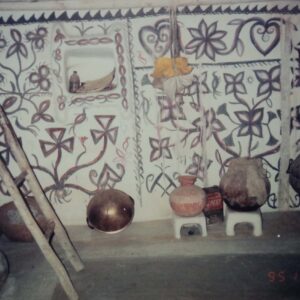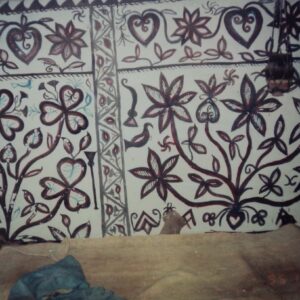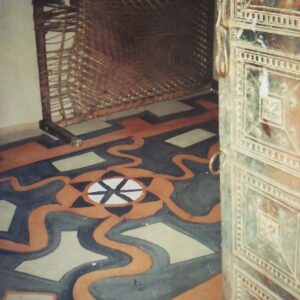Hazaribagh is the headquarter of the North Chotanagpur Division located on a plateau with the leafy township of middle size surrounded by a number of picturesque forest villages hamlet in hills and valley. The Hazaribagh and adjoining Chatra district have revealed nearly 18 pre-historic rockart sites dated to the Mesol-Chalcolithic period (10,000 B.C) in the Sati, Maudhi and Satpahar hills in the North Karanpura valley, drained by the river Damodar flowing west to east. These painted rock-art shelters referred to by local tribals as Khovar meaning Caves of the bridal couple were first brought to light by Bulu Imam (Convenor INTACH Hazaribagh in 1991.
Sohrai is the winter harvest art, and is celebrated one day after Diwali (festival of light). The Sohrai murals depicting Pashupati (lord of animals), Kamla baan (forest of lotuses), and Tree of Life, is painted using cloth
swabs or chewed twigs of the local Saal forest tree used for brushing their teeth (called datwan) by the villagers. Many of the designs may be compared with prehistoric rock art and pottery markings and prehistoric seal motifs from Harappa.
Photo Archives
Sohrai painting, Hazaribagh, Jharkhand
Sohrai painting, Hazaribagh, Jharkhand
Documentation: Padma Shri Bulu Imam, Hazaribagh, Jharkhand
Period: 1990 – 2000
Gallery images: 18
Courtesy: Alka and Justin Imam
Copyright: Virasat Trust
Audio-Visual archives I Audio archives I Video archives I Photo Archives
Disclaimer:
The opinions expressed within this article or in any link are the personal opinions of the author. The facts and opinions appearing in the article do not reflect the views of Folkartopedia and Folkartopedia does not assume any responsibility or liability for the same.
Folkartopedia welcomes your support, suggestions and feedback.
If you find any factual mistake, please report to us with a genuine correction. Thank you.

